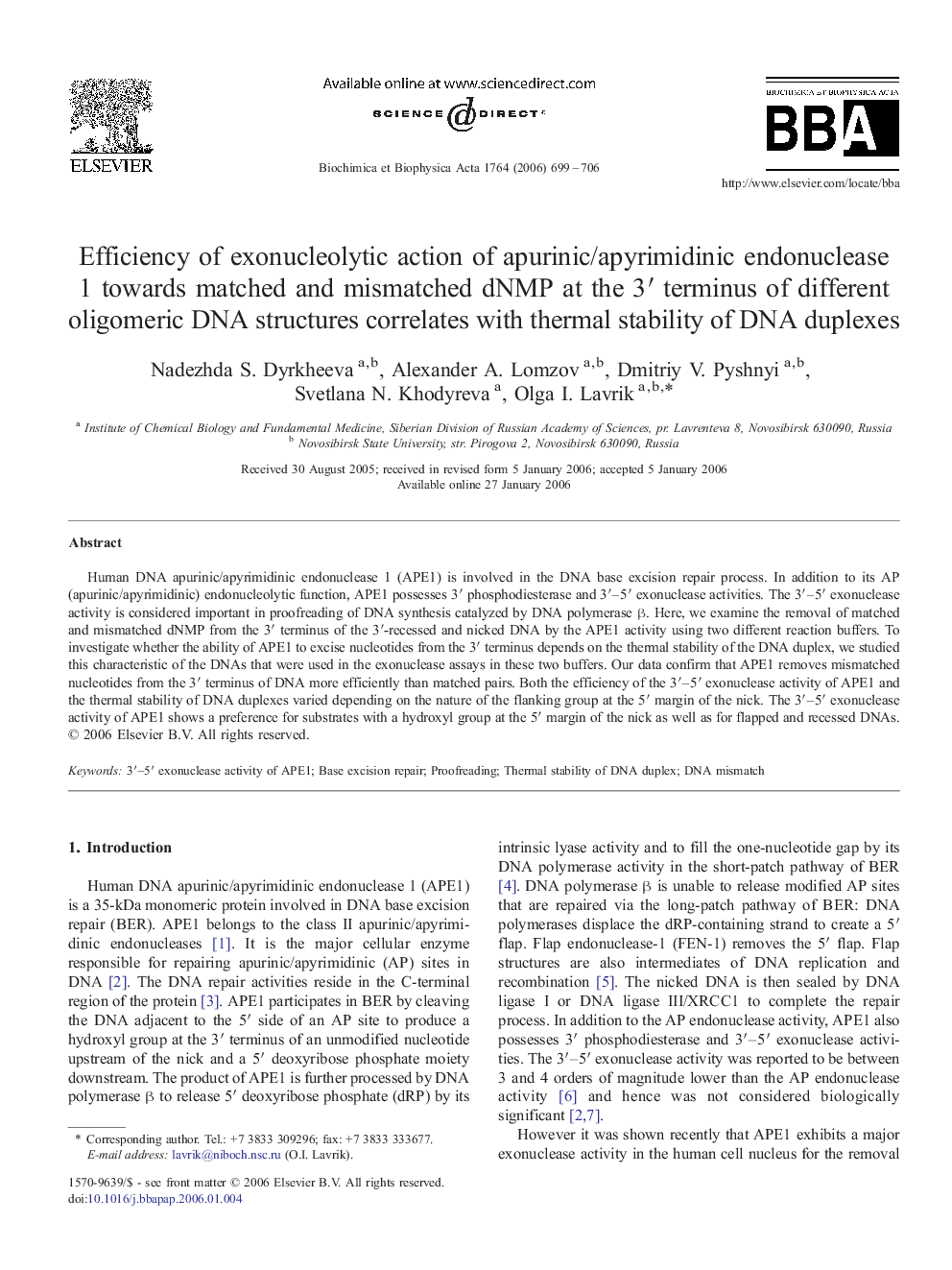| Article ID | Journal | Published Year | Pages | File Type |
|---|---|---|---|---|
| 1179734 | Biochimica et Biophysica Acta (BBA) - Proteins and Proteomics | 2006 | 8 Pages |
Human DNA apurinic/apyrimidinic endonuclease 1 (APE1) is involved in the DNA base excision repair process. In addition to its AP (apurinic/apyrimidinic) endonucleolytic function, APE1 possesses 3′ phosphodiesterase and 3′–5′ exonuclease activities. The 3′–5′ exonuclease activity is considered important in proofreading of DNA synthesis catalyzed by DNA polymerase β. Here, we examine the removal of matched and mismatched dNMP from the 3′ terminus of the 3′-recessed and nicked DNA by the APE1 activity using two different reaction buffers. To investigate whether the ability of APE1 to excise nucleotides from the 3′ terminus depends on the thermal stability of the DNA duplex, we studied this characteristic of the DNAs that were used in the exonuclease assays in these two buffers. Our data confirm that APE1 removes mismatched nucleotides from the 3′ terminus of DNA more efficiently than matched pairs. Both the efficiency of the 3′–5′ exonuclease activity of APE1 and the thermal stability of DNA duplexes varied depending on the nature of the flanking group at the 5′ margin of the nick. The 3′–5′ exonuclease activity of APE1 shows a preference for substrates with a hydroxyl group at the 5′ margin of the nick as well as for flapped and recessed DNAs.
